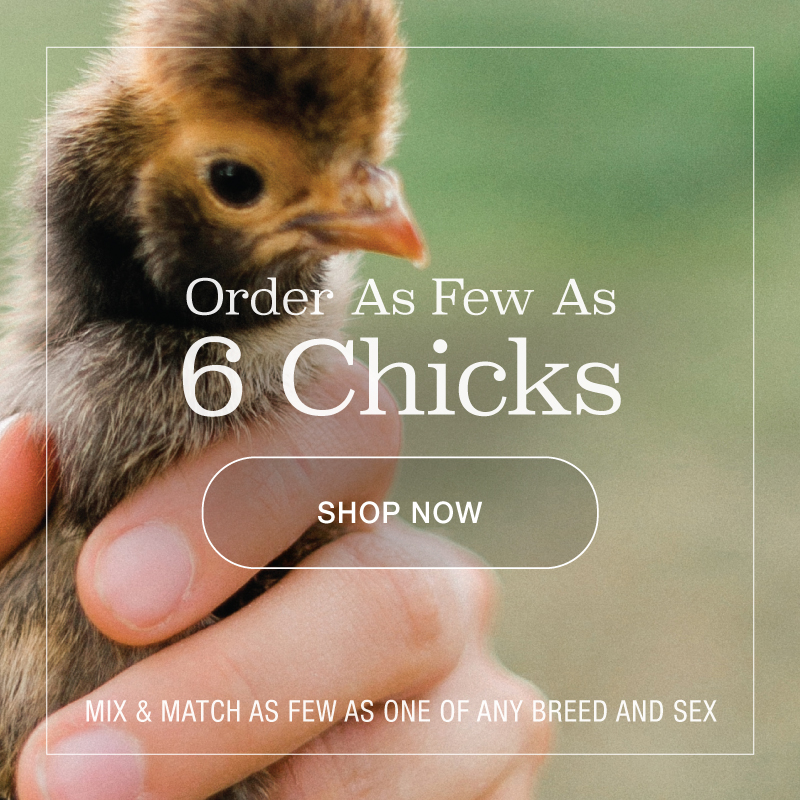by Patricia Foreman
[This is the first in a series of chicken care articles by guest author Patricia Foreman.]
In 1917, a few years before the Great Depression, Murray McMurray expanded his poultry hobby and love for chickens to found The McMurray Hatchery. His full-time job was helping with the family bank. As the recession accelerated toward the Great Depression money became tighter and jobs dried up. More and more people were getting chickens to use for their food supply, and as barter.
Then, in 1929 the Great Depression hit hard, complete with a run on banks. The McMurray family-owned bank was forced to close. But where one door had closed another opened. The demand for chickens boosted the fledgling Murray McMurray Hatcheries with poultry sales and the opportunity to be a successful and profitable company. Today, the Murray McMurray Hatchery is the largest rare-breeds hatchery in the world.
Fast forward about 90 years to today, and we find ourselves in another Great Recession. Folks are, once again, finding money tight and jobs scarce. Interest in local foods is ever-cresting and the chicken has re-emerged as the mascot of local food supply.
Today urban gardening and agriculture is on the verge of a giant leap forward, ushering in a new — and necessary — era of home and local food production. In order to do this, we need a new vision for the future. Part of this vision is expressed in what we are calling: The Chicken Have-More Plan.
What does the Chicken Have-More Plan mean? It means that by keeping small, family flocks of chickens, and by employing their various skill sets, that all of us can enjoy the benefits of being a little more self-sufficient. And this is self-sufficiency from our backyards to our national boundaries. Below are a few key components of the Chicken Have-More Plan.
1. Promoting and Enhancing Backyard Agriculture
Chickens are important to urban agriculture because of their innate behaviors that can be employed as skill sets (see the attached PDF diagram). Some of these skill-sets include producing nitrogen-loaded manure for fertilizer and creating compost. Other skill sets include being non-toxic, mobile bi-ped herbiciders and pesticiderers. And of course, they also provide eggs and meat that only travel a short distance to your kitchen table.
2. Diverting Food and Yard “Waste” Away from Landfills
Chickens eat food scraps and can help transform yard “wastes” into the organic assets of compost and topsoil. About 25% of all municipal trash collection is biomass. Employing chickens to bio-recycle some of this “waste” can save BIG TIME tax payer dollars from NOT having to be spend funds on trash collection, transportation, transferring, and tipping fees at landfills.
3. Decrease Oil Consumption and Lower Carbon Footprints
Commercial food systems cannot produce or function without oil. A whopping 17% of America’s oil is used in agricultural and, about 25% of this oil is used for fertilizer. Chickens can help America kick the oil habit by decreasing the amount of oil products used in feeding ourselves.
4. National Defense
Whoever controls your food supply controls you. Food supply, or lack of it, has created and destroyed civilizations since time began. Locally produced food helps to guarantee a continuous local food supply and this helps keep America strong and safe.
5. Emergency Preparedness
In times of disasters food can become a matter of life or death. Keeping a family flock of chickens means that — if grocery store shelves are bare — you can still have omelets, and even a chicken dinner if all the food supply lines are destroyed or disrupted.
There is a new book in McMurray book store: City Chicks: Keeping Micro-flocks of Chickens as Garden Helpers, Compost Creators, Biomass Recyclers and Local Food Suppliers.
City Chicks ushers in a new paradigm of how to use chickens in a variety of roles that help decrease carbon footprints, save tax payer dollars, support local food supply production and enhance national defense and emergency preparedness.
And all this is done in a way that is biologically sustainable, economically equitable, and serves us, our communities, our Earth and the future generations of all beings. City Chicks provides a how-to, hands-on, dirt-under-the-finger-nails, full-nest vision of a complete Chicken Have-More Plan for our times.
We’ll explore more about the Chicken Have-More Plan and chicken skill sets in future blogs.
May the flock be with YOU!
Patricia Foreman
[scg_html_patforeman_signature]



I’ve frequently visited some developing countries, so I’m comfortable with the idea of keeping a small number of chickens around.
However, I can understand how keeping roosters in an urban or suburban area could be a problem. The old story is that roosters rise at dawn and start crowing.
In my experience, they can crow at any time. And they start going at it hard and heavy after midnight. They don’t wait for dawn. After a few nights I got used to the sound, but at first they did keep me awake.
But having hens for eggs is a great idea. And they’ll be healthier than the ordinary eggs you buy at the store, because they’ll have more Omega 3 healthy fat.
We (my Husband, our four children and myself) have a charming flock of 3. They are strictly pets, yard art, and garden helpers. My best friend built us the most charming cottage (coop) for our chickens which can be seen (plans available) on uTube or befriendyourartists.com. The coop draws attention from all over our city of Seattle and beyond. Our chickens are “city chicks” to the extreme with their privileged life and loving attention. Our 5 year old collects the eggs and washes them every day, I was amazed the first time I washed a warm egg…you can feel the quality and essence of wholesome goodness right there in your hand…absolutely beautiful…. Our son even scoops poop from the lawn and patio and puts it in the compost bin (I know, I did say “extreme”) I was worried about keeping chickens with our busy lifestyle, but they have brought such pleasure to our family and are very little work. I use wood shavings in the coop, and find I can clean up the poop from under their roosting pole in a jiffy, the design of the coop makes it super easy to keep up. The chickens stay in the yard with only 2 escapes so far. I clipped their wings and viola! no more escapes!
I honestly love my chickens, and am very happy we decided to raise them from babies, we got them as hatchlings when our youngest child was 2 weeks old…She just turned 1 today! I am ready to raise another 2 baby chicks! They are more “tame” that way.
Thank you for your timely article! After researching the benefits of raising a few hens in my backyard I enjoyed every minute of “picking out” my rare & unique breeds from Murray McMurray Hatchery. I chose my breeds based on their reputation for cold-hardiness (I live in western WI), docile behavior (with 3 children, family, & friends this was important), & even relied on chicken owner’s feedback on which reeds did the best in teh backyard setting. That said, it was several of my “surprise” birds that McMurray through in for free that ended up being our family favorites! Fluffaluffagus, our big black cochin became our family mascot, “2-Headed”, a White Crested Black Polish, overcame his “breed reputation” of suspicious, paranoid behavior & enjoyed lots of holding time by myself & plenty of children. Our love & admiration for their abilities like mosquito & tic demolition grew; & it was with great sadness that I had to “foster out” my hens to my farmer friend due to a city ordinance criminalizing my flock. I’ve since been on the move to legalize city chickens & have included some of the inks below-including the “Chicken Petition” to help garner support & encourage our City Council members to repeal the “No chicken” law & instead adopt an ordinance base on Madison, WI’s current law. Help us with our fight! This is simply, as your article helps to clarify, a common-sense measure that encourages fiscal responsibility & independence, while also supporting sustainability, good health, decreased fertilizer & pesticide use, & is lots of fun to boot! My hope is that for those who so desire, the freedom to own a backyard flock will be legalized across the country!
http://www.petitiononline.com/laxchix/petition.html
http://www.wxow.com/global/video/popup/pop_playerLaunch.asp?vt1=v&clipFormat=flv&clipId1=4927105&at1
http://lacrossetribune.com/news/local/article_8ac2d98e-8980-11df-bb67-001cc4c03286.html
http://www.examiner.com/x-39906-Bluff-Country-Backyard-Chickens-Examiner~y2010m7d7-Backyard-Chickens-are-Big-News-in-LaCrosse
Backyard chickens make the prime time news! – Bluff Country Backyard Chickens Examiner
http://www.pfc.coop/pfcblogdetails.asp?PostID=5
We (my 5 yr old G’daughter and I) just love our flock of 10 chickens. She loves to gather the eggs, and of course I love feeding them who, in turn, feed my little garden. We get plenty eggs for us, her parents, and neighbors – even sell a few. This actually brings in enough money to pay for the feed that I puchase. I do give them all sorts of left-overs from meals and even when I manage to “clean out the frig”. Only thing is, I’d have to be very hungry before I’d consider using one for meat.
Love the post. We have been wanting to add a rooster in to our current flock of 35. We live out in the country however we do have neighbors close by, and they are annoyed with another neighbors rooster crowing 1/4 mile away so we have not gotten one. I wish there were a way to keep the rooster noise down so that the hens could reproduce should times worsen or disaster strike. Any suggestions?
The following article that was included in one of our recent newsletters discusses this:
Keeping Roosters Quietly and Responsibly
Also, the book Making Mobile Hen Houses gives a design for a sound-moderated coop.
Hi,
Maybe you can “borrow” a couple of roosters for a week or so. They will mate with your hens and then you can return the roosters! Then, you can either gather the eggs and incubate them or with any luck, one or more of the hens will get broody and sit some for you.
Take the roosters indoors at night, put them in a cage and cover them. Even if they crow the sound should be muffled enough not to bother anyone.
Thanks so much! Big help!
Thank you for such a wonderful post and I agree with you 120% Having your own flock no matter what size it is provides food and safe food at that. I have lots of respect for our chicken’s. Why? Because they are giving their life to feed us. It is easy to go to a store pick up your chicken pay for it and walk out. What about the time, the care, the feed you are spending to raise them? Just to give your family the most natural food right in your own back yard. Great Post, Robin from Oregon